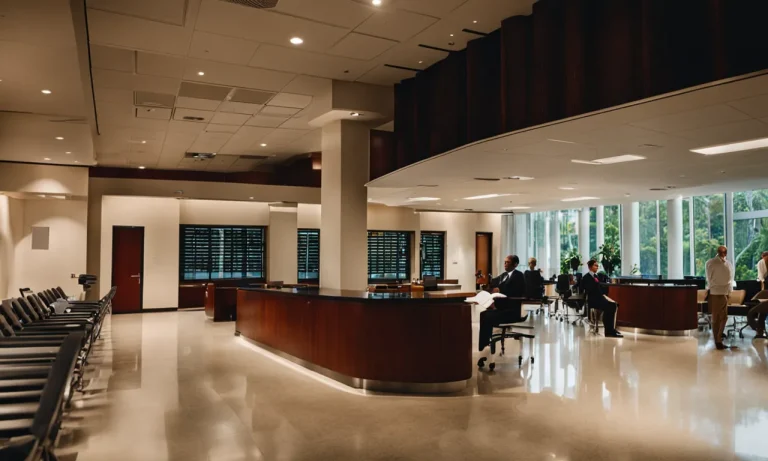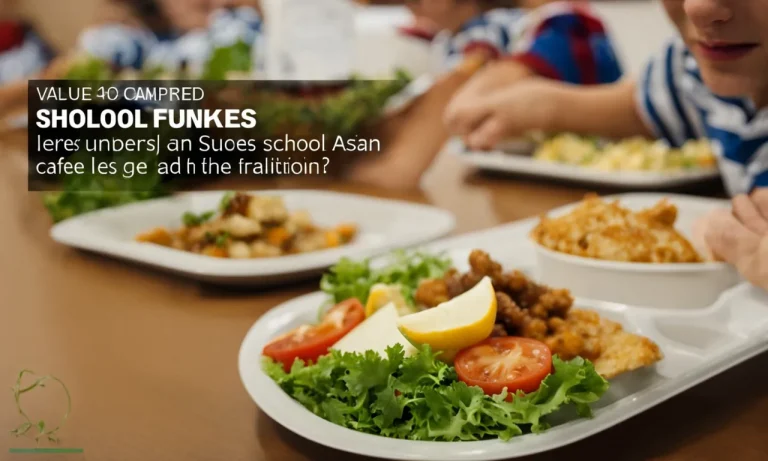School lunch is a hot topic in education today. Many advocate that it should be free for all students, but there are valid reasons why free school lunches may not be the best policy. In this article, we’ll explore three key arguments against universal free school lunches.
If you’re short on time, here’s a quick answer: Providing free school lunches for all students regardless of need would be costly, reduce personal responsibility, and limit food choices. There are better ways to ensure students get nutritious meals without making school lunch completely free for everyone.
Read on as we dive deeper into these three central reasons why free school lunches for all may not be advisable. We’ll look at the costs involved, how it affects student responsibility, and the impact on food choices available.
The High Costs of Universal Free School Lunches
Current lunch program costs
Before diving into why school lunch should not be free for all students, it is important to understand the current costs of the school lunch program. The National School Lunch Program, regulated by the U.S. Department of Agriculture (USDA), serves over 30.1 million children each day, with an annual cost of approximately $28.7 billion.
This program provides subsidized or free meals to students from low-income families, ensuring that they receive proper nutrition during the school day.
The current program already incurs significant costs, and expanding it to include all students would require a substantial increase in funding.
View this post on Instagram
Increased costs with free lunches for all
While the idea of providing free lunches for all students may seem appealing, it comes with a hefty price tag. Implementing universal free school lunches would mean that the government or educational institutions would have to foot the bill for every student’s meal, regardless of their financial situation.
This would result in a significant increase in costs, potentially burdening taxpayers or diverting funds from other important areas of education.
Moreover, providing free lunches for all students would not target the most vulnerable and needy individuals who genuinely require assistance. By offering free meals to everyone, regardless of their economic background, resources would be spread thin, potentially diluting the support for those who truly need it.
Other ways to subsidize needy students
Instead of making school lunch free for all students, there are alternative ways to ensure that children from low-income families receive the nutrition they need. One approach is to improve and expand existing programs that provide subsidized or free meals to students based on their family’s income level.
By focusing resources on those who truly need assistance, the program can be more cost-effective and targeted.
Additionally, community-based initiatives and partnerships with local organizations can play a crucial role in providing meals for students who may not have access to proper nutrition. These initiatives can help bridge the gap and ensure that no child goes hungry while also avoiding the financial strain of universal free school lunches.
Reducing Student Responsibility and Appreciation
While the idea of free school lunch may seem appealing, there are valid concerns about the potential negative impact it could have on students’ sense of responsibility and appreciation. Here are three reasons why school lunch should not be free:
Students learn responsibility through school lunch payments
When students are required to pay for their school lunches, it teaches them an important lesson about responsibility. By having to budget their money and make choices about what they can afford to buy, students learn valuable financial skills that will benefit them later in life.
Additionally, having a financial stake in their meals encourages students to make healthier choices and not waste food.
Free handouts may reduce appreciation
If school lunch becomes a free handout, there is a risk that students may take it for granted and not appreciate the value of the meal provided. When something is given without any effort or responsibility on the part of the recipient, the sense of gratitude and appreciation can diminish.
By requiring students to contribute financially towards their meals, it reinforces the idea that food is not something to be taken for granted.
View this post on Instagram
Better to teach budgeting skills
Instead of making school lunch free, it would be more beneficial to focus on teaching students budgeting skills and financial literacy. By incorporating these lessons into the curriculum, students can learn how to manage their money effectively and make informed decisions about their spending, including their food choices.
These skills will serve them well beyond their school years and prepare them for the financial responsibilities they will face as adults.
Limiting Food Choices and Flexibility
While the idea of providing free school lunches to all students may seem beneficial, there are several reasons why it may not be the most ideal solution. One of the main concerns is that it limits food choices and flexibility.
Federal nutrition guidelines must be met
When school lunches are provided for free, they must adhere to strict federal nutrition guidelines. While these guidelines are put in place to ensure that students receive nutritious meals, they can also limit the variety of food options available.
For example, schools may be required to offer a certain amount of fruits and vegetables, whole grains, and low-fat milk. While these are all important components of a healthy diet, some students may have dietary restrictions or preferences that are not accommodated by the limited menu options.
Less flexibility than home lunches
Another drawback of free school lunches is that they offer less flexibility compared to home-packed lunches. When students bring their own lunches from home, they have the freedom to choose foods that they enjoy and that meet their individual dietary needs.
This can be especially important for students with allergies, intolerances, or specific cultural or religious dietary restrictions. By providing free lunches, schools may inadvertently limit the ability of students to make choices that align with their personal preferences and needs.
View this post on Instagram
Food quality may suffer with mass production
Mass producing meals for a large number of students can also lead to a decrease in food quality. In order to serve thousands of students efficiently, schools often rely on pre-packaged or processed foods.
While efforts are made to ensure that these meals meet nutrition guidelines, they may not always provide the same level of freshness and quality as homemade meals. Additionally, the lack of customization that comes with mass production can result in meals that may not be as flavorful or appealing to students.
Conclusion
While the intent behind universal free school lunches is admirable, there are reasonable concerns regarding costs, responsibility, and food quality that should be addressed. Perhaps a better approach is targeted lunch assistance for families in need paired with nutrition education and financial literacy training to equip students with valuable life skills.
Rather than simply handing out free lunches to all, we should explore policy solutions that subsidize students who require it while teaching important personal and social lessons. With thoughtful policies, we can ensure every child gets a nutritious meal at school while also cultivating their life skills and values.






